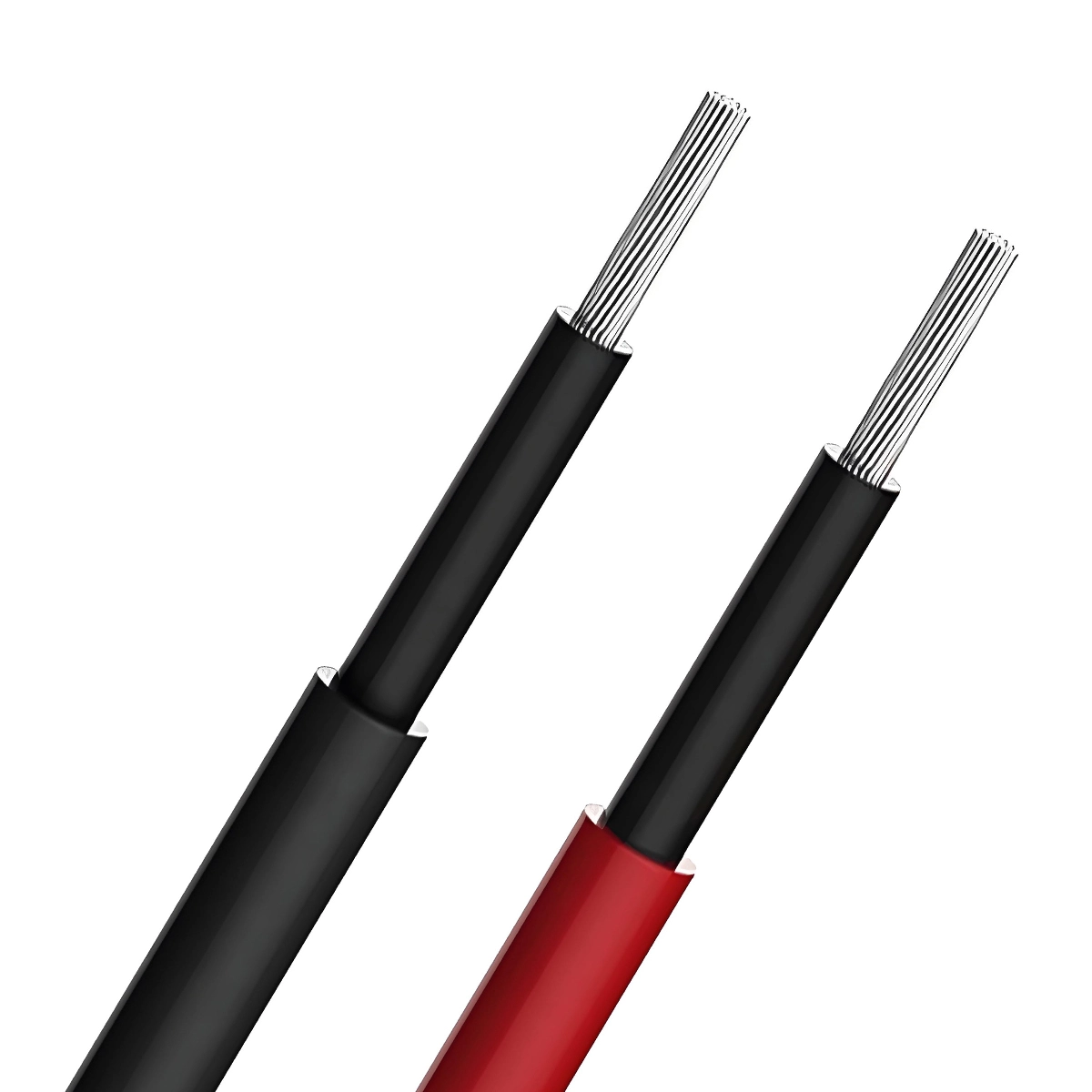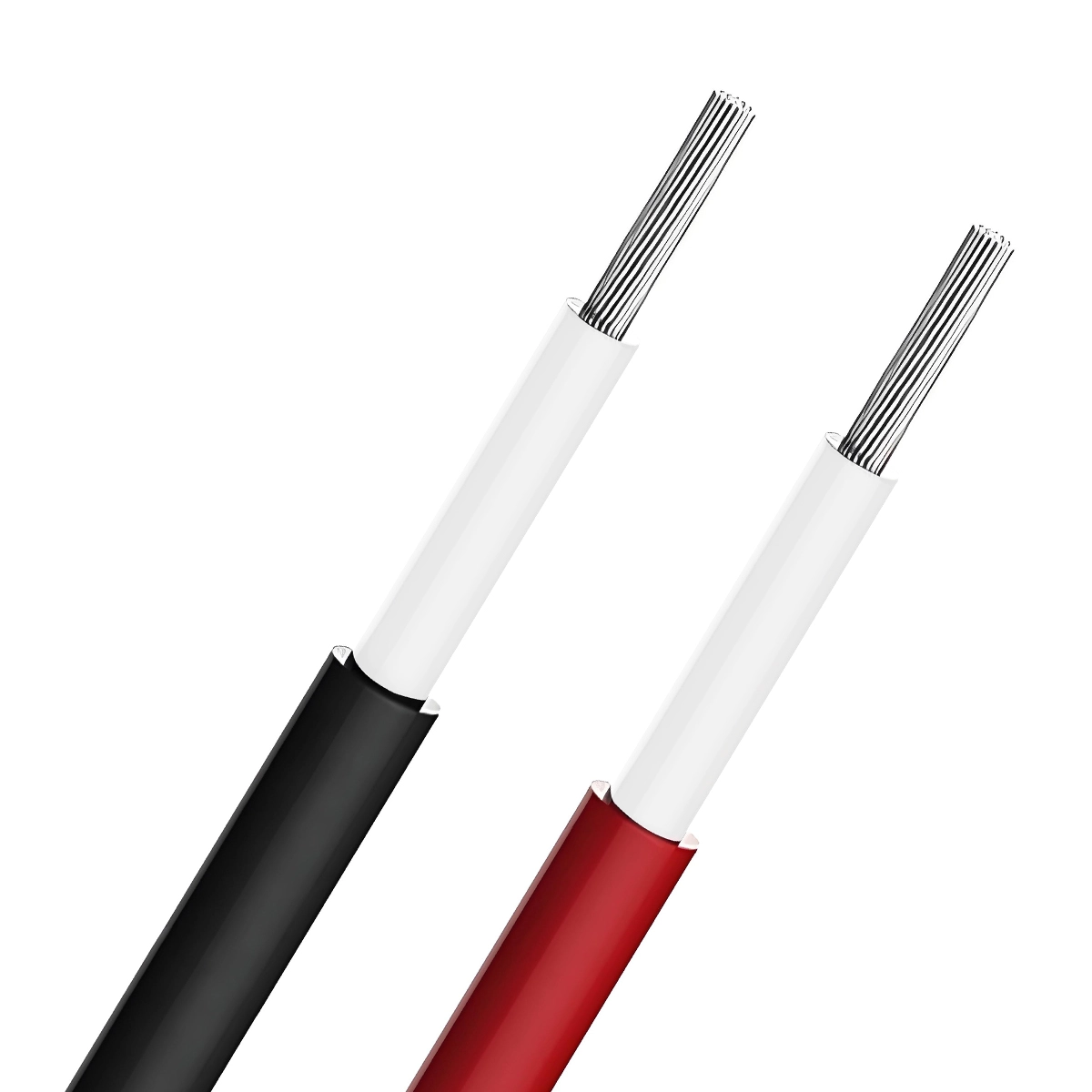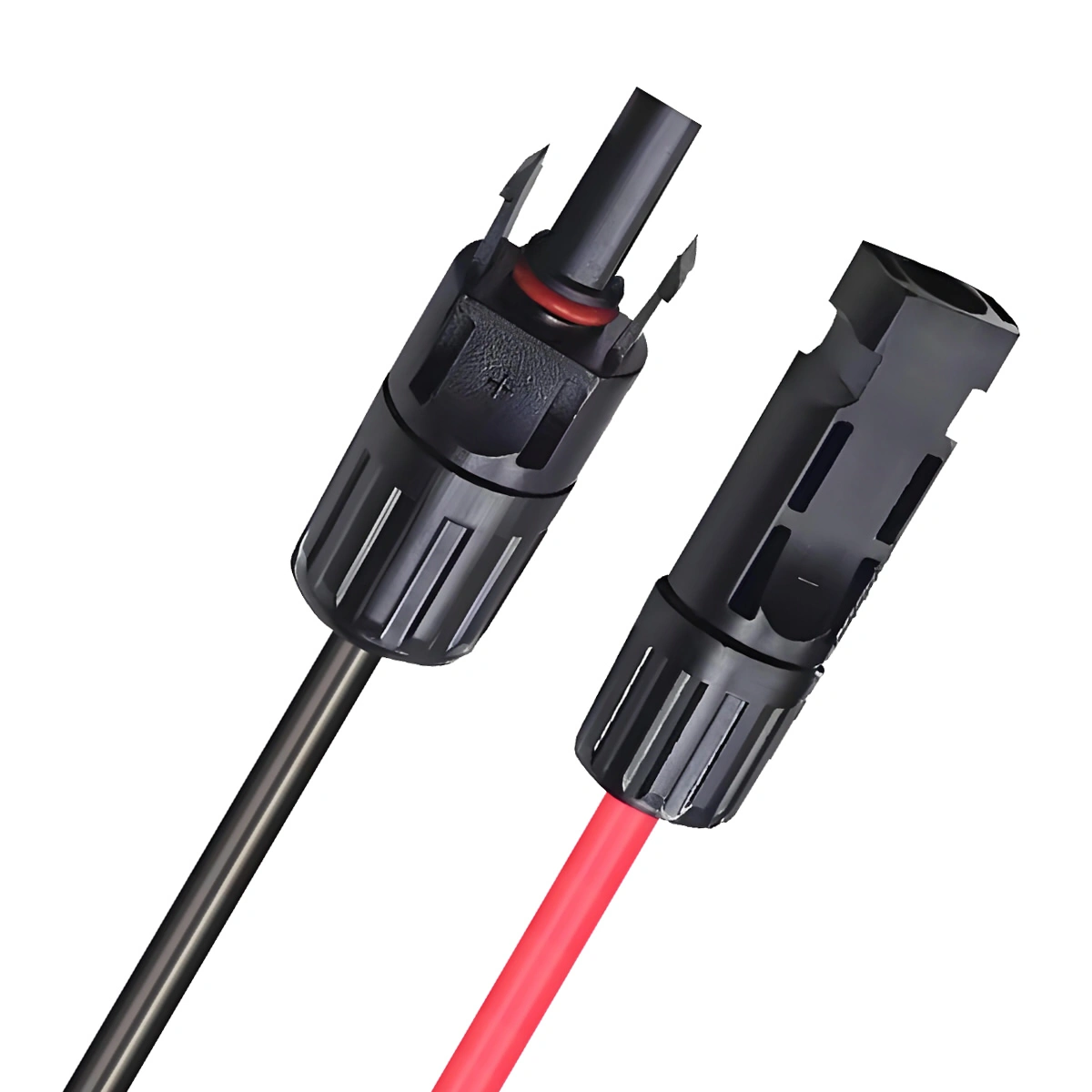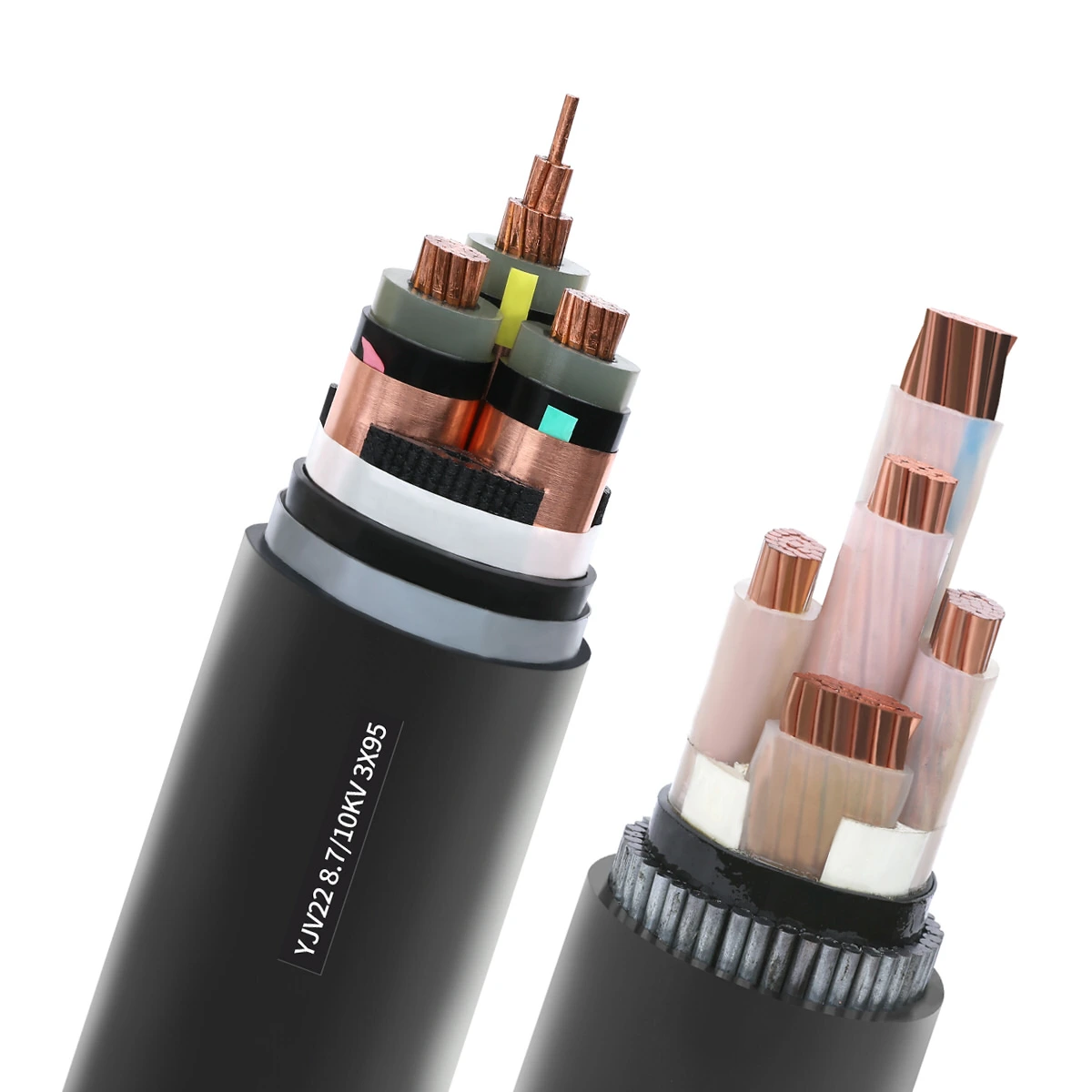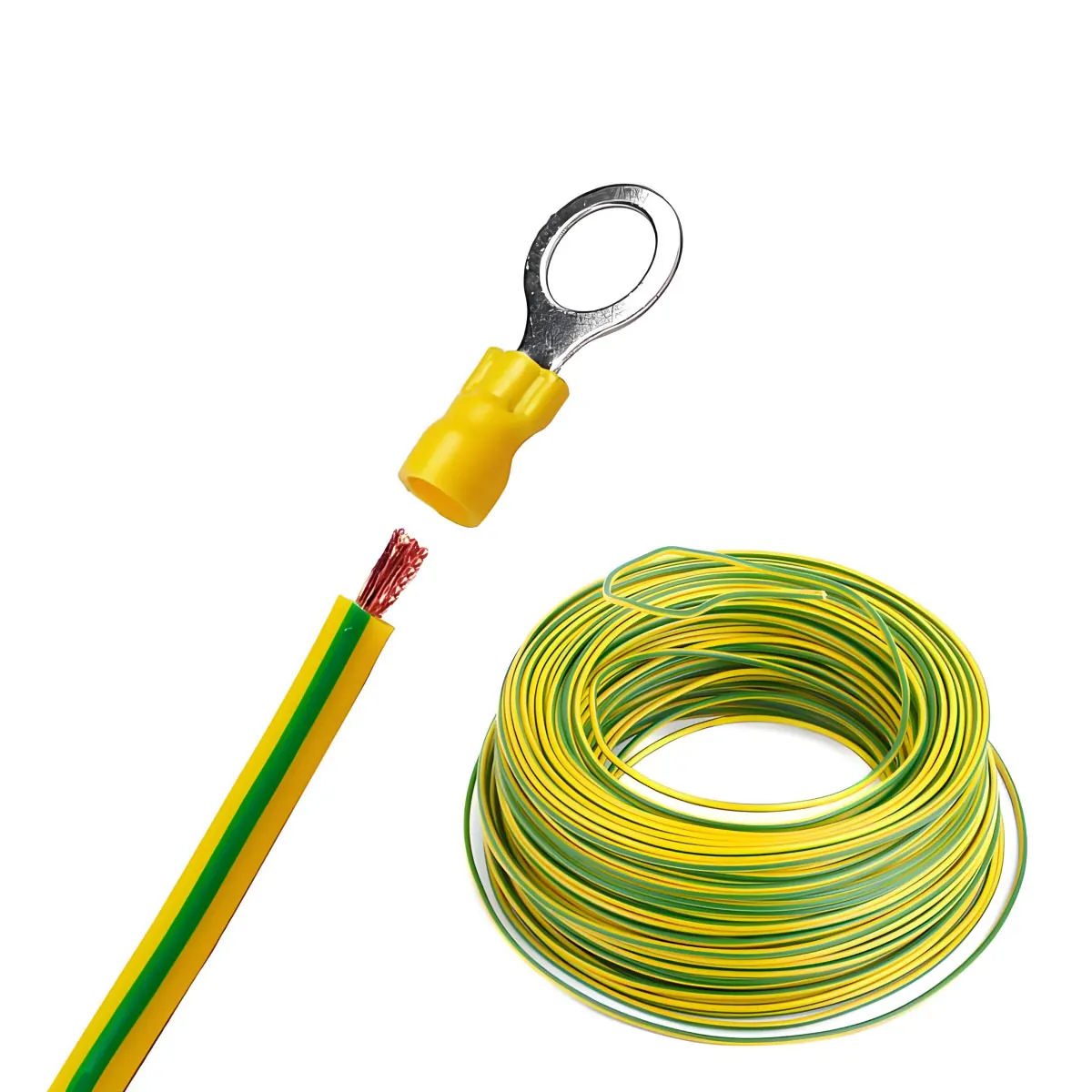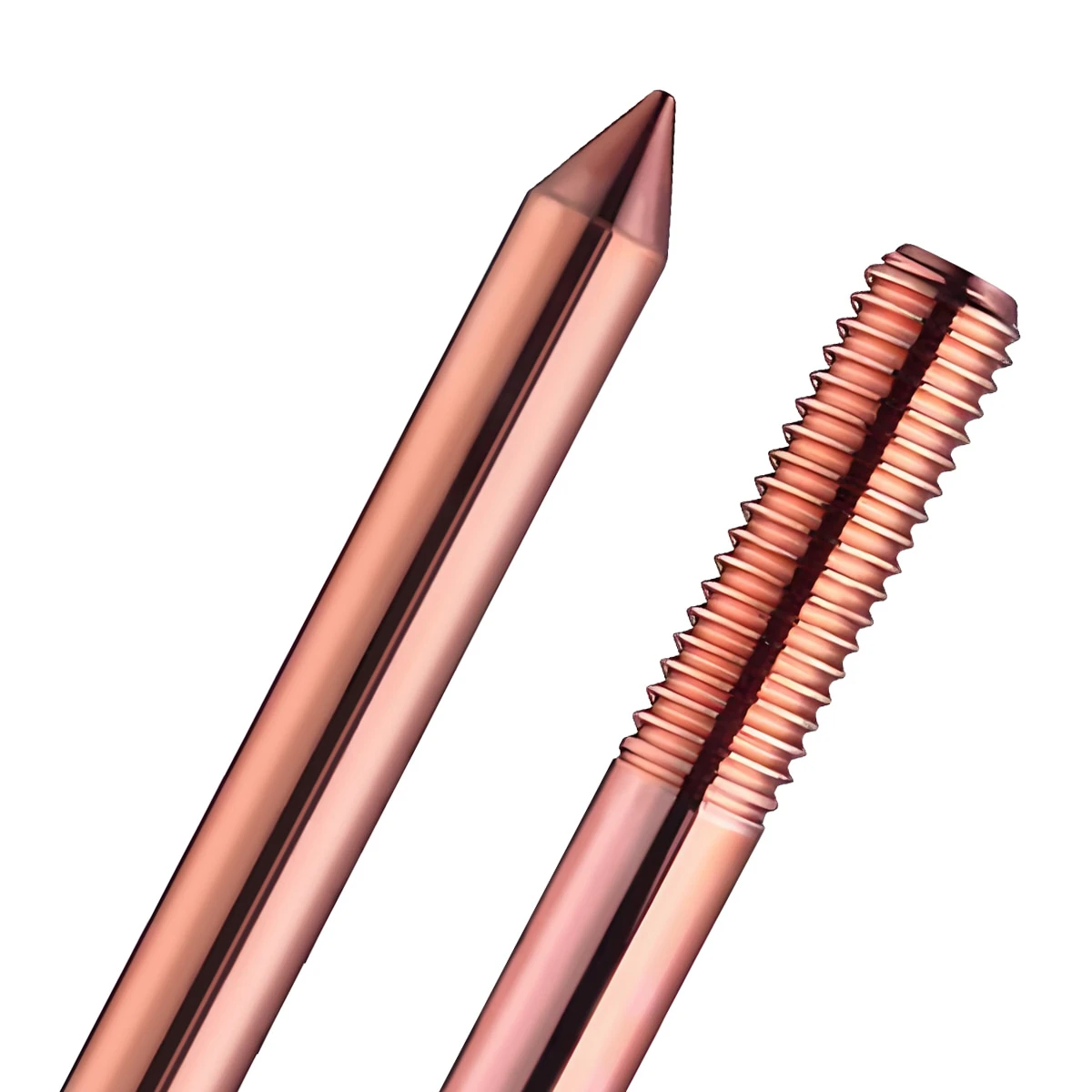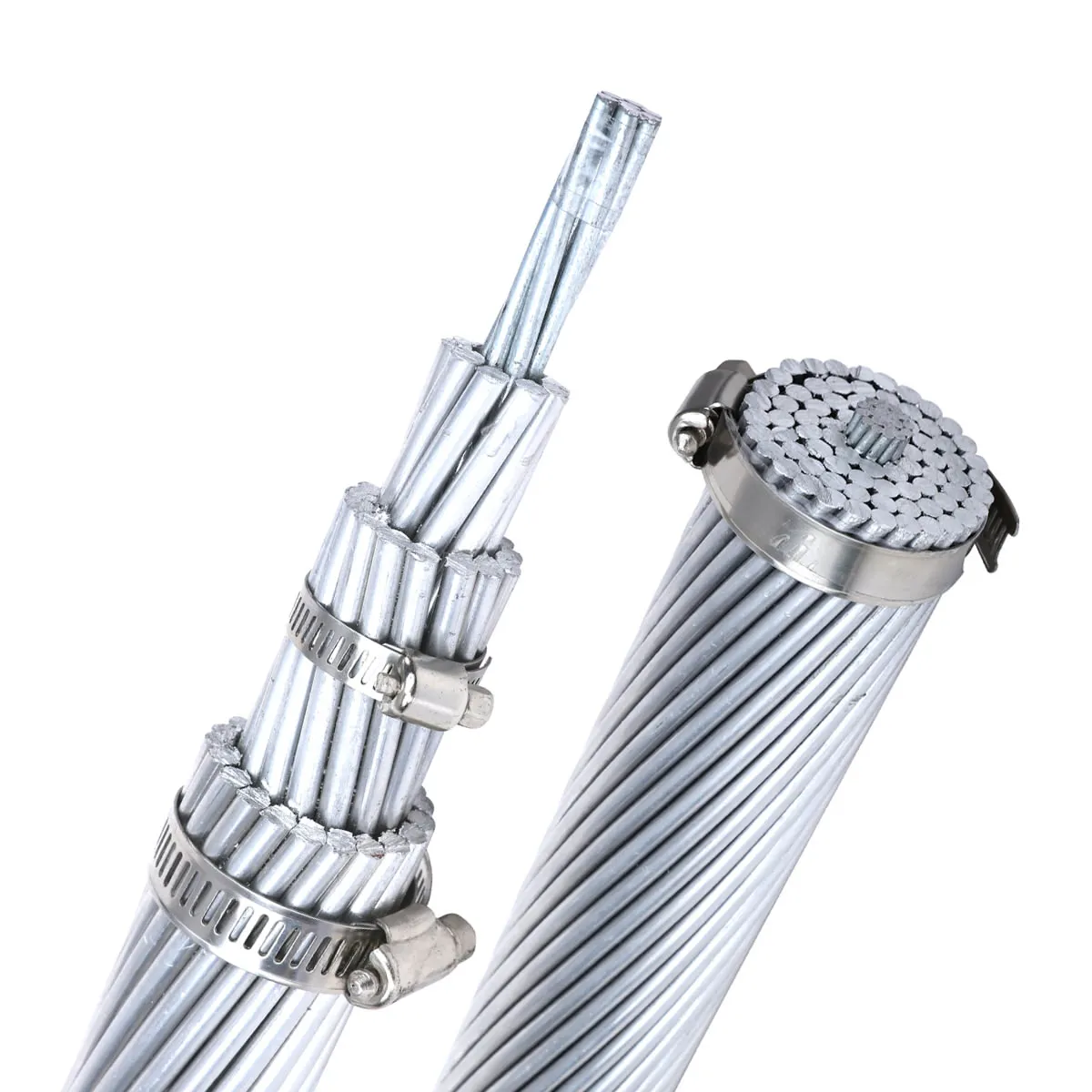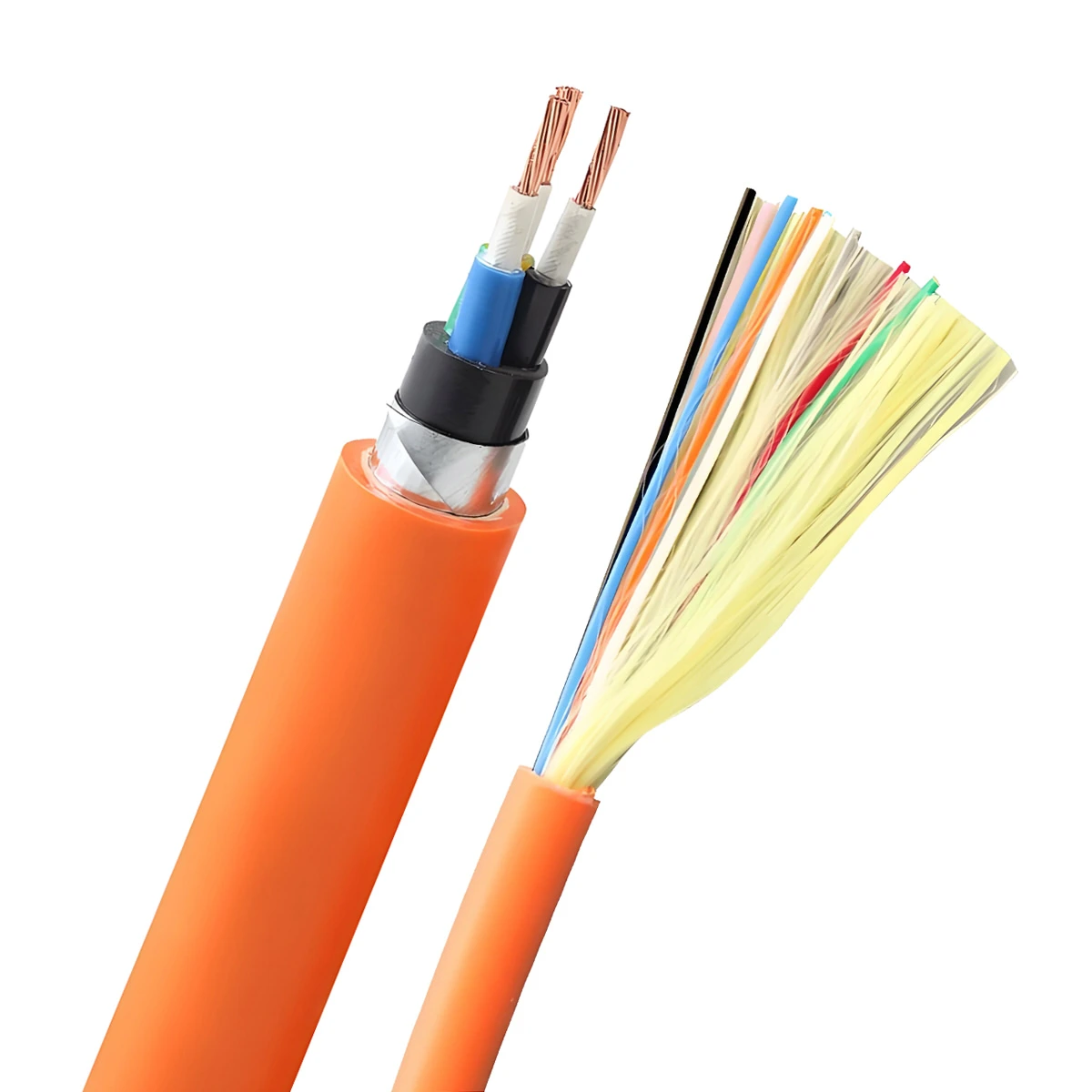H1Z2Z2-K केबल
H1Z2Z2-K cable is mainly used for the connection between solar panels and between solar panels and inverters/junction boxes in PV power generation systems.
ZMS solar H1Z2Z2-K cable uses low-smoke halogen-free irradiated cross-linked polyolefin material, which can adapt to harsh outdoor weather conditions. It features resistance to humidity and heat, high and low temperatures, acids and alkalis, ओजोन प्रतिरोध, यूवी प्रतिरोध, flame retardancy, abrasion resistance, and strong toughness.
The solar cable H1Z2Z2-K in the ZMS photovoltaic cable series has high transmission efficiency and a long service life of up to 25 साल. This type of PV cable is easy to install, safe, and reliable, and can be widely used in various solar energy engineering projects, public solar power generation, photovoltaic power plants, वगैरह.
- विशेष विवरण: 1.5~240mm²
- उत्पाद मानक: EN50618:2014
- उत्पाद प्रमाणन: टीयूवी, सीटी, आईएसओ
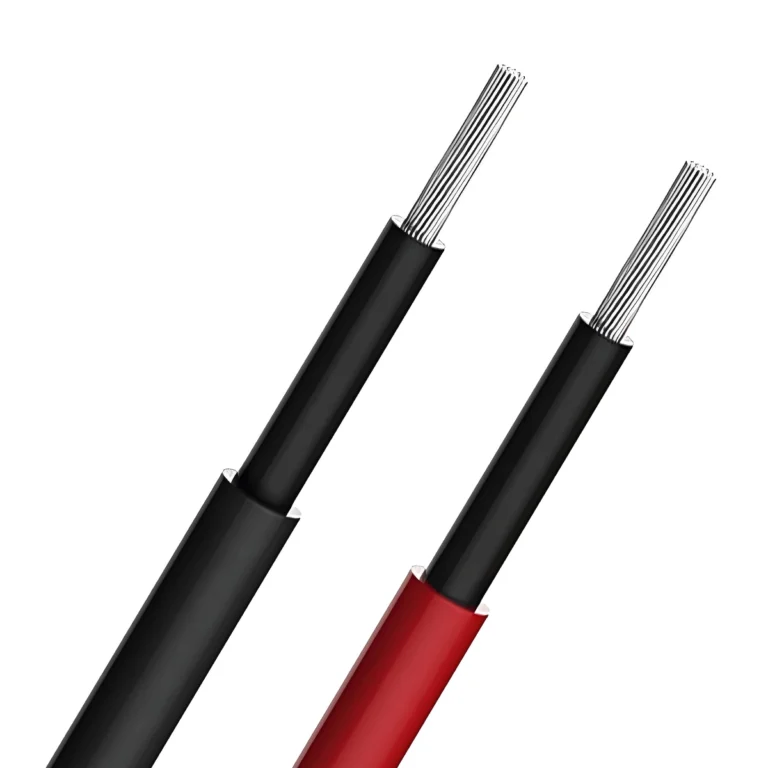
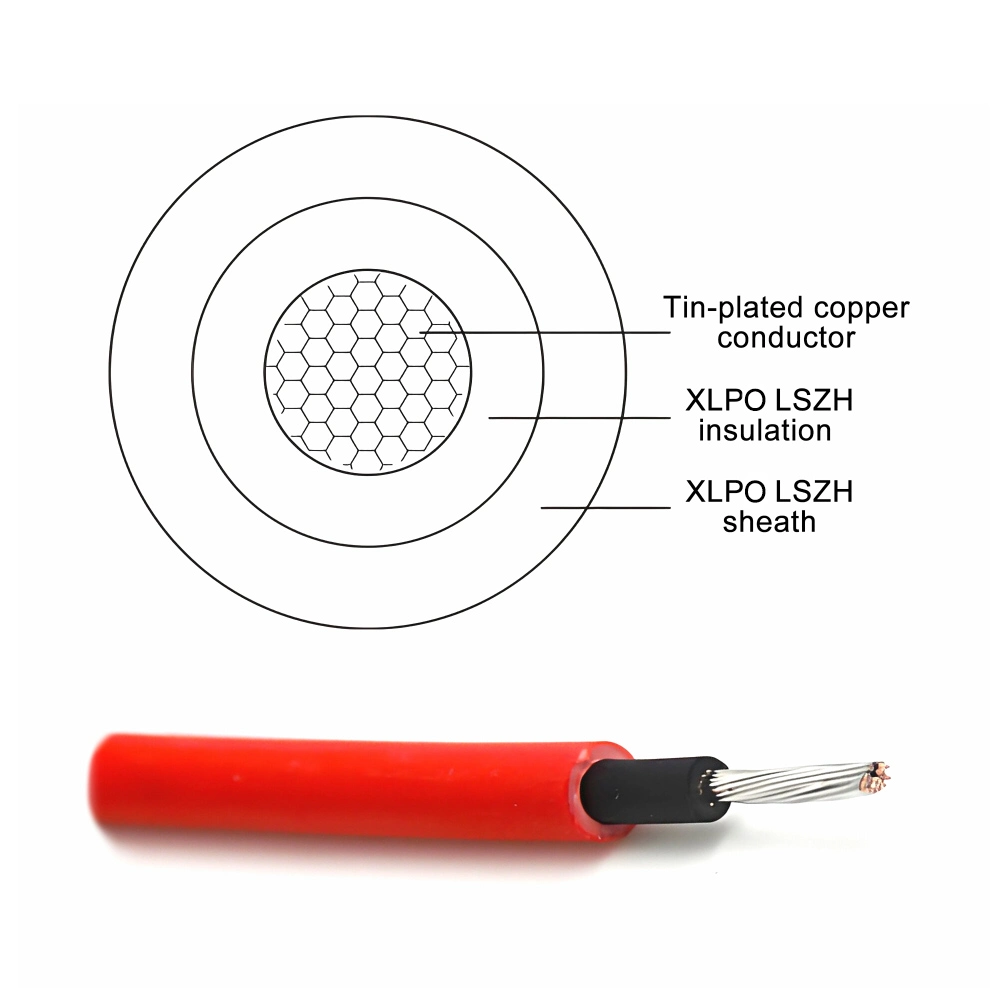
H1Z2Z2-K Cable Technical Parameters
- कंडक्टर: 99.9% Tin-plated Copper
- इन्सुलेशन: Low smoke halogen-free irradiated cross-linked polyolefin (Black)
- म्यान: Low smoke halogen-free irradiated cross-linked polyolefin (Black/Red)
- एसी रेटेड वोल्टेज (उओ/उ): 1.0/1.0के.वी
- डीसी रेटेड वोल्टेज (यू ओ): 1.5के.वी (Between conductors, conductor to earth)
- अधिकतम तंत्र वोल्टेज (एक): 1.2के.वी
- कंडक्टर संचालन तापमान: -45° C से +120 ° C से
- परिचालन परिवेश तापमान: -40° C से +90 ° C
- केबल बिछाने का तापमान: -25 डिग्री सेल्सियस से कम नहीं
- ज्वाला मंदक रेटिंग: EN50625 / UL1571
- न्यूनतम झुकना त्रिज्या: 6डी (डी: केबल का बाहरी व्यास)
- स्थापना विधियाँ: नाली, उथली खाई बिछाने, केबल ट्रेंच बिछाने, सुरंग, सैंडविच लेटिंग, समर्थित हवाई बिछाना, निलंबित हवाई बिछाना, वगैरह.
- सेवा जीवन: ≥25 वर्ष
ZMS H1Z2Z2-K Certification

H1Z2Z2-K Cable Structure Parameters
| Specification (mm of) | Conductor Diameter (मिमी) | Nominal Insulation Thickness (मिमी) | Nominal Sheath Thickness (मिमी) | Approximate Cable Outside Diameter (मिमी) | Approximate Cable Weight (किलो/किमी) | Maximum DC Resistance of Conductor at 20°C (Ω/किमी) |
| 1×1.5 | 1.58 | 0.7 | 0.8 | 4.6 | 35 | 13.7 |
| 1×2.5 | 2.02 | 0.7 | 0.8 | 5.0 | 47 | 8.21 |
| 1×4 | 2.58 | 0.7 | 0.8 | 5.6 | 65 | 5.09 |
| 1×6 | 3.17 | 0.7 | 0.8 | 6.2 | 87 | 3.39 |
| 1×10 | 4.1 | 0.7 | 0.8 | 7.6 | 132 | 1.95 |
| 1×16 | 5.6 | 0.7 | 0.9 | 8.8 | 197 | 1.24 |
| 1×25 | 7.1 | 0.9 | 1.0 | 10.9 | 303 | 0.795 |
| 1×35 | 8.5 | 0.9 | 1.1 | 12.5 | 410 | 0.565 |
| 1×50 | 10.2 | 1.0 | 1.2 | 14.6 | 573 | 0.393 |
| 1×70 | 12.0 | 1.1 | 1.2 | 16.6 | 777 | 0.277 |
| 1×95 | 14.0 | 1.1 | 1.3 | 18.8 | 1030 | 0.210 |
| 1×120 | 16.0 | 1.2 | 1.3 | 21.0 | 1284 | 0.164 |
| 1×150 | 17.0 | 1.4 | 1.4 | 22.6 | 1594 | 0.132 |
| 1×185 | 19.0 | 1.6 | 1.6 | 25.4 | 1979 | 0.108 |
| 1×240 | 22.0 | 1.7 | 1.7 | 28.8 | 2540 | 0.0817 |
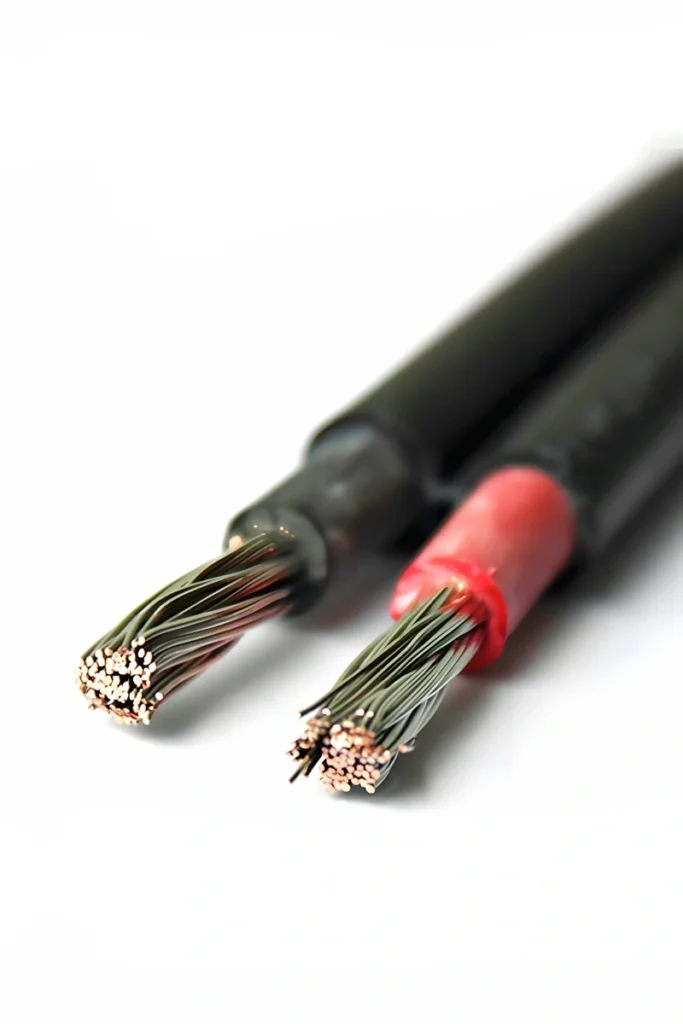
H1Z2Z2-K Long-Term Allowable Current Carrying Capacity
| इंस्टालेशन | हवा में एकल केबल | एकल केबल किसी वस्तु की सतह पर | संपर्क में दो केबल किसी वस्तु की सतह पर |
| क्रॉस सेक्शन (mm of) | वहन क्षमता (ए) | ||
| 1.5 | 30 | 29 | 24 |
| 2.5 | 41 | 39 | 33 |
| 4 | 55 | 52 | 44 |
| 6 | 70 | 67 | 57 |
| 10 | 98 | 93 | 79 |
| 16 | 132 | 125 | 107 |
| 25 | 176 | 167 | 142 |
| 35 | 218 | 207 | 176 |
| 50 | 276 | 262 | 221 |
| 70 | 347 | 330 | 278 |
| 95 | 416 | 395 | 333 |
| 120 | 488 | 464 | 390 |
| 150 | 566 | 538 | 453 |
| 185 | 644 | 612 | 515 |
| 240 | 775 | 736 | 620 |
| परिचालन तापमान | 120डिग्री सेल्सियस | ||
| परिवेश का तापमान | 60डिग्री सेल्सियस | ||
अक्सर पूछे जाने वाले प्रश्न
फोटोवोल्टिक प्रणालियों के लिए विशेष केबलों का उपयोग क्यों करें??
फोटोवोल्टिक केबल विशेष रूप से फोटोवोल्टिक विद्युत उत्पादन परियोजनाओं के लिए डिज़ाइन किए गए हैं, इन्सुलेशन और शीथिंग विशेषताओं के साथ जो सामान्य केबलों में नहीं होती.
यदि पीवी सिस्टम में साधारण केबल का उपयोग किया जाता है, कठोर बाहरी वातावरण में उनके असफल होने की संभावना रहती है, संपूर्ण सौर ऊर्जा प्रणाली का जीवनकाल बहुत कम हो गया है. इसके अतिरिक्त, इससे वर्तमान अधिभार हो सकता है, गंभीर वोल्टेज ड्रॉप, बार-बार पीढ़ी दोष, और फोटोवोल्टिक बिजली संयंत्रों में कम उत्पादन दक्षता, यहां तक कि संभावित रूप से संयंत्र में आग भी लग सकती है.
इसलिए, फोटोवोल्टिक बिजली संयंत्रों के दीर्घकालिक स्थिर संचालन को सुनिश्चित करने के लिए 25 साल, फोटोवोल्टिक प्रणालियों के लिए विशेष रूप से डिज़ाइन किए गए केबलों का चयन करना आवश्यक है, जैसे H1Z2Z2-K या PV1-F.
H1Z2Z2-K पीवी केबल्स के लिए क्या विशिष्टताएं चुनी जानी चाहिए?
विशिष्ट फोटोवोल्टिक प्रणालियों में, सबसे आम विकल्प H1Z2Z2-K 1 हैं×4 और H1Z2Z2-K 1×6 केबल. आम तौर पर, बड़े केबल क्रॉस-सेक्शन अधिक भार-वहन क्षमता का संकेत देते हैं.
कार्यशील वोल्टेज जैसे विचार, वर्तमान क्षमता, और पर्यावरणीय तापमान सीमा को भी ध्यान में रखा जाना चाहिए. वोल्टेज और वर्तमान आवश्यकताओं का निर्धारण करने के बाद, उचित विनिर्देश का चयन करने के लिए H1Z2Z2-K केबलों की पैरामीटर तालिका देखें.
यदि आपको केबल विशिष्टताओं के चयन में अनिश्चितता का सामना करना पड़ता है, हमारी ZMS तकनीकी टीम अनुरूप समाधान पेश करने के लिए उपलब्ध है.
H1Z2Z2-K और PV1-F फोटोवोल्टिक केबल्स के बीच क्या अंतर हैं?
PV1-F केबल एक पुराना संस्करण सौर केबल है जो TÜV 2Pfg1169 मानक का अनुपालन करता है, और इसके मानक प्रमाणीकरण का अद्यतन होना बंद हो गया है. इसके विपरीत, H1Z2Z2-K फोटोवोल्टिक केबल नवीनतम TÜV EN50618 का अनुपालन करता है:2014 प्रमाणीकरण.
PV1-F और H1Z2Z2-K केबल के बीच वोल्टेज रेटिंग भिन्न होती है. PV1-F की वोल्टेज रेटिंग DC है: 1.0केवी और एसी: उओ/उ: 0.6/1.0के.वी, जबकि H1Z2Z2-K की वोल्टेज रेटिंग DC है: 1.5केवी और एसी: उओ/उ: 1.0/1.0के.वी. H1Z2Z2-K उच्च ट्रांसमिशन दक्षता और स्थिरता प्रदान कर सकता है.
संरचना की दृष्टि से, PV1-F केबल में एकल इन्सुलेशन परत होती है, जबकि H1Z2Z2-K केबल एक दोहरी परत इन्सुलेशन संरचना को अपनाती है. यह H1Z2Z2-K केबल को स्थायित्व और सुरक्षा में बेहतर बनाता है, विशेष रूप से यांत्रिक क्षति और पर्यावरणीय कारकों के विरुद्ध.
सारांश, H1Z2Z2-K सौर केबल डिजाइन में अधिक उन्नत है, उच्च विद्युत और यांत्रिक प्रदर्शन की पेशकश, अधिक मांग वाले अनुप्रयोग वातावरण के लिए उपयुक्त. वहीं दूसरी ओर, PV1-F सौर केबल मुख्य रूप से लागत-प्रभावशीलता में लाभप्रद है, अधिकांश पारंपरिक फोटोवोल्टिक प्रणालियों के लिए उपयुक्त.
लागत-प्रभावशीलता संबंधी विचारों के लिए, पीवी1-एफ केबल का उपयोग फोटोवोल्टिक मॉड्यूल के बीच श्रृंखला कनेक्शन और स्ट्रिंग से डीसी वितरण बक्से के समानांतर कनेक्शन के लिए किया जा सकता है।. इस दौरान, H1Z2Z2-K केबल का उपयोग वितरण बक्से और इनवर्टर के बीच कनेक्शन के लिए किया जा सकता है, साथ ही बड़े इनवर्टर में डायरेक्ट करंट कनेक्शन के लिए भी.
H1Z2Z2-K फोटोवोल्टिक केबलों के DC और AC अनुप्रयोगों के बीच क्या अंतर हैं?
H1Z2Z2-K केबल का उपयोग दोनों DC सर्किट के लिए किया जा सकता है (1.5के.वी) और एसी सर्किट (1.0/1.0के.वी). फोटोवोल्टिक विद्युत उत्पादन प्रणालियों में, उनके विशिष्ट अनुप्रयोग अंतर इस प्रकार हैं:
डीसी अनुप्रयोगों के लिए:
- फोटोवोल्टिक मॉड्यूल के बीच श्रृंखला कनेक्शन
- तारों के बीच समानांतर संबंध
- स्ट्रिंग्स से डीसी वितरण बक्सों तक समानांतर कनेक्शन
- डीसी वितरण बक्से से इनवर्टर तक कनेक्शन
एसी अनुप्रयोगों के लिए:
- इनवर्टर से स्टेप-अप ट्रांसफार्मर तक कनेक्शन
- स्टेप-अप ट्रांसफार्मर से वितरण उपकरणों तक कनेक्शन
- वितरण उपकरणों से ग्रिड या उपयोगकर्ताओं तक कनेक्शन
सोलर केबल को लाल और काले रंग में क्यों विभाजित किया जाता है??
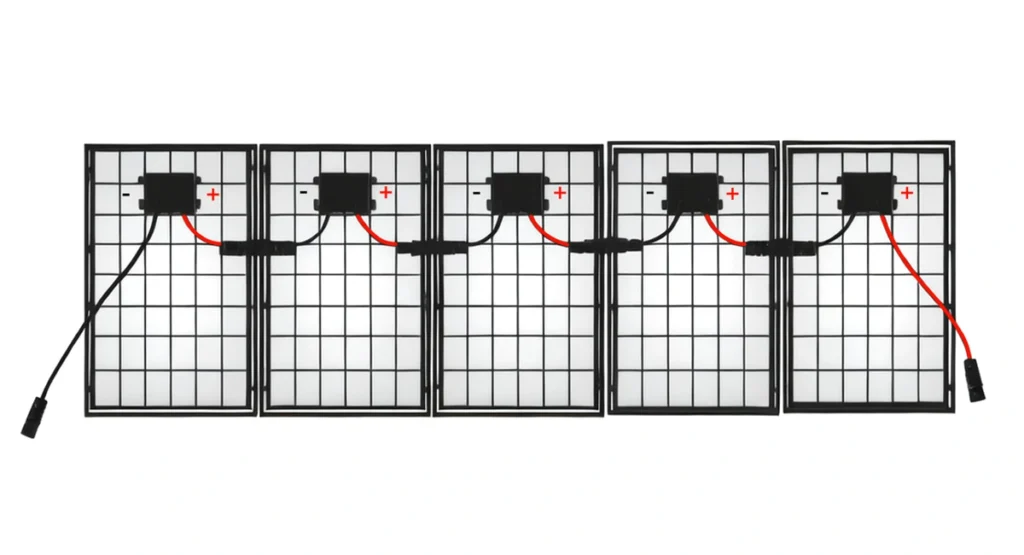
फोटोवोल्टिक उद्योग में, लाल और काले केबलों का उपयोग पहचान का एक व्यापक रूप से स्वीकृत तरीका बन गया है. उनका प्राथमिक उद्देश्य सकारात्मक और नकारात्मक ध्रुवों के बीच अंतर करना है. डीसी सर्किट में, आम तौर पर, लाल सौर तार धारा के धनात्मक ध्रुव को दर्शाते हैं, जबकि काले सौर तार नकारात्मक ध्रुव को दर्शाते हैं. यह रंग भेदभाव सौर प्रणालियों की स्थापना और रखरखाव के दौरान फोटोवोल्टिक कनेक्शन की ध्रुवीयता को तुरंत पहचानने में मदद करता है, इस प्रकार वायरिंग संबंधी त्रुटियों को रोका जा सकता है.
How to Make Solar Panel Connectors and Connect Solar Panels with H1Z2Z2-K Cables?
Once the solar connectors are prepared, solar panels can be connected in parallel, series, or hybrid configurations.
In parallel connection, the positive and negative terminals of multiple photovoltaic panels are connected separately. This cabling method increases the overall current output of the system, suitable for scenarios requiring higher current output.
In series connection, the positive and negative terminals of multiple photovoltaic panels are connected sequentially. This cabling method increases the overall voltage output of the system, suitable for scenarios requiring higher voltage output.
Hybrid connection combines parallel and series wiring methods. It involves connecting some photovoltaic panels in parallel and then connecting these parallel combinations in series. Hybrid wiring methods allow flexible combinations to meet the energy needs of different scenarios.
ZMS can provide various universal MC connectors separately, which are perfectly compatible with MC4 connectors. इसके अतिरिक्त, we can also provide solar panel extension cables with pre-made connectors to meet your different requirements.
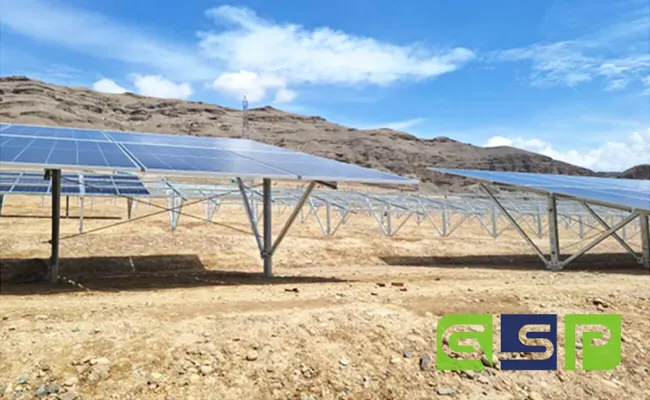
प्रोजेक्ट हाइलाइट
ZMS के साथ जुड़ गया हरित राज्य शक्ति (जीएसपी), नवीकरणीय ऊर्जा अवसंरचना में अग्रणी, एक स्मारकीय सुसज्जित करने के लिए 10 काबुल में MWP फोटोवोल्टिक परियोजना, अफ़ग़ानिस्तान.
ZMS ने पीवी परियोजना का व्यापक विश्लेषण किया और इसे प्रदान किया 1X10 और 1X6 सौर केबल H1Z2Z2-K, 3X300 एलवी केबल, 3X300 एमवी केबल, साथ ही एसीएसआर 185/30 ओवरहेड केबल. इन्हें पूरक करने के लिए पीवी कनेक्टर और सावधानीपूर्वक क्यूरेटेड टूलबॉक्स जैसे महत्वपूर्ण सहायक उपकरण थे.
गुणवत्ता और विश्वसनीयता के प्रति ZMS की प्रतिबद्धता ने सुचारू स्थापना और परिचालन दक्षता की सुविधा प्रदान की, क्षेत्र की स्थायी ऊर्जा अवसंरचना में योगदान देना.
जेएमएस सेवा
अनुकूलित विनिर्माण
We understand that every customer's needs are unique. इसलिए, हम वैयक्तिकृत सौर केबल अनुकूलन सेवाएँ प्रदान करते हैं, आपकी विशिष्ट परियोजना आवश्यकताओं के अनुसार केबल विशिष्टताओं से लेकर कनेक्शन इंटरफेस तक हर विवरण को तैयार करना, अधिकतम अनुकूलता और दक्षता सुनिश्चित करना.
ग्लोबल रैपिड रिस्पांस लॉजिस्टिक्स
हमारे वैश्विक लॉजिस्टिक्स नेटवर्क के समर्थन से, ZMS सुनिश्चित करता है कि आपका फोटोवोल्टिक केबल ऑर्डर दुनिया के किसी भी कोने में सुरक्षित और तुरंत पहुंचे. हमारी पेशेवर लॉजिस्टिक्स टीम आपके सामान की समय पर डिलीवरी सुनिश्चित करने के लिए परिवहन के हर चरण की निगरानी करती है.
तकनीकी समर्थन
ZMS's technical support team is always on standby. आपके सामने जो भी तकनीकी चुनौतियाँ आती हैं, हम त्वरित प्रतिक्रियाएँ और पेशेवर समाधान प्रदान कर सकते हैं, चिंता मुक्त उपयोगकर्ता अनुभव सुनिश्चित करना.
हरित उत्पादन
हमारे सौर केबल और सहायक उपकरण उत्पादन प्रक्रिया के दौरान पर्यावरण मानकों का सख्ती से पालन करते हैं, पर्यावरण पर उनके प्रभाव को कम करना. ZMS चुनकर, आप न केवल उच्च गुणवत्ता वाले फोटोवोल्टिक केबलों में निवेश कर रहे हैं बल्कि ग्रह के सतत विकास में भी योगदान दे रहे हैं.

